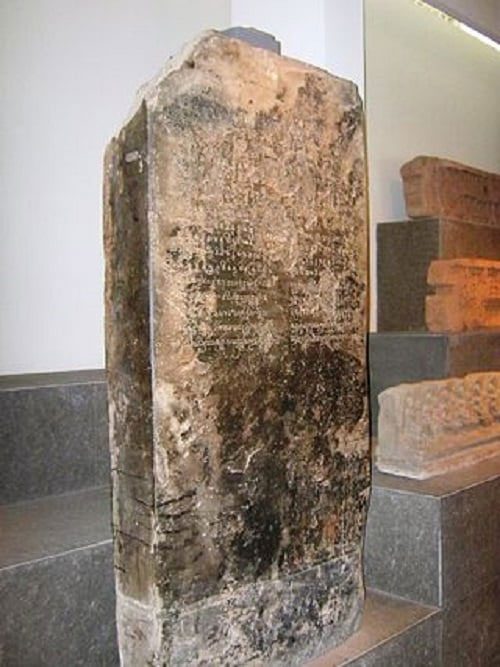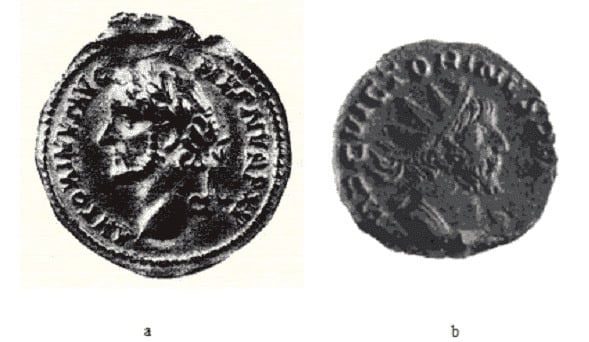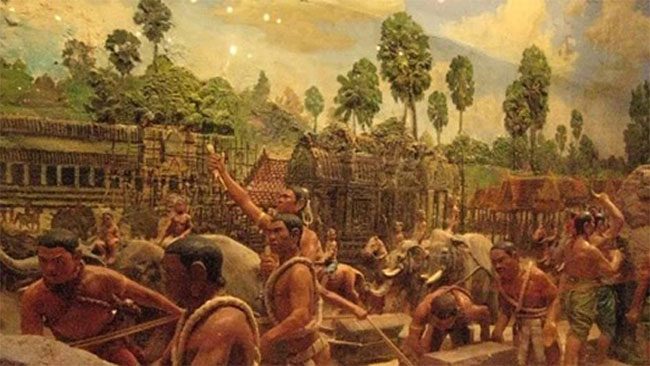The S-shaped land of Vietnam today was once the cradle of three great civilizations spread across its three regions in ancient times.
The northern region was home to the Dong Son civilization, which extended all the way to Dong Ding Lake and the Yangtze River. The central region featured the Sa Huynh civilization, known for its superior metallurgy. Lastly, the southern region was characterized by the Oc Eo civilization, which gave rise to the Funan Kingdom, a powerful nation in Southeast Asia.
Oc Eo Civilization
According to archaeological discoveries and historical records, the Oc Eo civilization originally consisted of autonomous settlements that shared a common culture and a belief in Buddhism.
In the first century AD, one of the major settlements, Koh Thlok, rose to power under the leadership of Queen Liu Diep.
Ancient Chinese texts such as the “Book of Jin,” “Book of Southern Qi,” and “Book of Liang” recorded that a nobleman named Hun Dien in India received a divine dream, finding a bow at the foot of a tree, which instructed him to sail out to sea.
Hun Dien then took 1,000 soldiers on a ship to Oc Eo to conquer the settlements. Liu Diep resisted but was at a disadvantage and ultimately surrendered. Hun Dien accepted her surrender and married Liu Diep.
After marrying, Hun Dien continued to conquer the remaining settlements, unifying Oc Eo and establishing a new kingdom called Funan, subsequently ascending to the throne and founding the Kaudinya dynasty, with the capital named Dhak Mak (Vyadrapura).
Civilization Development and Global Trade
The Oc Eo people adopted Indian civilization, excelled in water management, and their belief in Buddhist teachings contributed to the prosperity of Funan.
Located at a crucial maritime traffic hub, Funan became a thriving center for waterborne trade. A notable canal stretched 90 km to Angkor Borei (a district in Takéo province, southern Cambodia). Oc Eo was strategically situated on the trade route between the sea, with the Malay Peninsula and India on one side, and the Mekong River and China on the other, making it a convenient transshipment point.

Ancient stone stele created during the Funan period (around the 2nd-3rd century), found in Dong Thap. (Photo: Bui Thuy Dao Nguyen/Wikipedia, CC BY-SA 3.0)
Archaeologists have uncovered numerous valuable trade items from Rome, India, China, and Southeast Asian countries, including coins, gemstone beads, glassware, metal utensils, jewelry made of gold and jade, with the symbol of the swastika prominently featured on gold jewelry.
Silver coins found in Funan have also been discovered in Malaysia, Thailand, and Myanmar, indicating the extensive trade activities of the Funan kingdom.

Roman coin from the reign of Emperor Antoninus Pius (left) found in Oc Eo. (Photo: Ian Glover 1989, Public Domain).
Many Buddha statues, temples, and spiritual structures found serve as evidence of the religious beliefs of the population, along with the development of sculpture and architectural art.
A Mighty Empire
According to ancient Chinese records, the Kaudinya dynasty lasted approximately 150 years. By the 2nd century, the last king of this dynasty, Hun Ban Ban, fell under the influence of a general, whose name was recorded in ancient Chinese history as “The Book of Liang” transliterated as Pham Su Man. After Hun Ban Ban’s death, the people revered Pham Su Man as king, establishing a new dynasty.
Pham Su Man commissioned large warships to conquer neighboring countries, subjugating and incorporating ten neighboring nations. Funan became the most powerful empire in Southeast Asia at that time, encompassing present-day southern Vietnam, parts of Malaysia, and most of southeastern Cambodia (covering a significant area of Cambodia).
Through trade with various nations, the Funan civilization continued to thrive. Later Funan kings established diplomatic relations with India and the Jin Dynasty of China, leading to the incorporation of both Indian and Chinese cultural influences. The writing system used by the Funan people at that time was based on Indian script.
By the 4th century, Funan was ruled by the Chandana dynasty. Funan maintained stable development, expanding its territory to fully occupy the land of present-day Cambodia and the plains of the Chao Phraya River in present-day Thailand.
At this time, the Funan Empire reached its greatest territorial extent, including all of southern Vietnam, all of Cambodia, the Chao Phraya River plains of Thailand, parts of Malaysia, and parts of Myanmar.
A Bridge Between Civilizations Worldwide
According to “The Book of Liang”, by the 5th century, a person from the land of Tianzhu named Qiao Chen Ru was proclaimed king by the people, establishing the Kaudinya II dynasty, transforming the state system of Funan to an Indian model, with Buddhism and Brahmanism as the foundational ideologies of the nation.
Funan continued to flourish, serving as a bridge between eastern and western civilizations such as China, India, Rome, and Persia, becoming one of the most powerful maritime empires of its time.
In Thoai Son district, An Giang province, when the locals excavated the Ba The canal, they discovered ancient structures, and archaeologists confirmed the existence of a bustling port of ancient Funan.
Conquered by the Khmer

By the 6th century, Funan experienced a power struggle among princes.
The territory of Funan was vast, comprising different ethnic groups, which naturally led to inequalities between them.
In the 6th century, a power struggle among princes weakened the state. The Khmer people in Chenla (present-day Cambodia) seized this opportunity to rise up for their independence, reclaiming land for themselves and expanding into areas previously governed by Funan.
In 550, the king of Chenla, Citrasena, advanced to attack the capital Dhak Mak of Funan. The king of Funan at that time, Rudravarman, could not withstand the assault and fled to Navanagara.
The capital Dhak Mak, once a cultural center of the world and a gathering place for the finest in Southeast Asia, was suddenly destroyed by the Khmer.
From that point on, Funan collapsed and could not recover, with its vassal states also breaking away. However, Funan, being an empire with a long-standing civilization, did not face immediate extinction; it wasn’t until the 8th century (two centuries later) that Chenla gradually fully occupied Funan and integrated it into Chenla.
Funan thrived due to maritime trade and excellent water management, but the Khmer were not skilled in these areas, and thus could not sustain the advantages that Funan had left behind. Although Chenla later developed, its influence remained limited to Southeast Asia, far inferior to the global impact of the Funan civilization.
“The Book of Southern Qi,” an ancient Chinese text, records the Funan people as follows:
“The Funan people often trade in gold, silver, and silk. Noble children typically wear sarongs made of fine silk. Women wear a type of dress that passes over their heads. The poor wrap a piece of coarse cloth around themselves. They cast rings and bracelets out of gold and make bowls and plates from jade. They cut down trees for wood to build houses and enclose their gardens around their homes. The king resides in a multi-story building. Along the coast, people plant tall sugar palms used for thatching houses. They construct long boats, eight or nine zhang long and six or seven zhang wide, with the bow and stern resembling the head and tail of a fish. The king rides on an elephant. Women can also ride elephants. They enjoy cockfighting…”.




















































